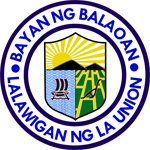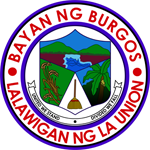First Aid for Fractures, Wounds Symposium Conducted in BDH
By: Melanie Holt, GPC-BDH | Photo By: Mhark Parchamento | Date: July 17, 2019

FIRST AID FOR FRACTURES AND WOUNDS. Bacnotan District Hospital (BDH) nurses, Mr. Arnel Fontanilla and Mr. Jeffrey Julian teach Mr. Reynaldo Querol, representative of Bacnotan Tricycle Operators and Drivers Association on how to splint a broken arm during the return demonstration as part of the Symposium on First Aid for Fractures and Wounds conducted on July 17, 2019 at BDH, Bacnotan, La Union. Said activity was done in observance of the National Disability Prevention and Rehabilitation Week with the aim to equip the participants with the skills and knowledge to minimize further injury and possible disability.
Nurses of Bacnotan District Hospital (BDH) conducted a Symposium on First Aid for Fractures and Wounds in observance of the National Disability Prevention and Rehabilitation Week on July 17, 2019 at BDH, Bacnotan, La Union.
A total of 30 participants attended the lectures by BDH nurses Mr. Jeffrey Julian and Mr. Arnel Fontanilla. In their lectures, they specifically tackled on first aid of bone, joint, and muscle injuries; splinting extremities; and wound management.
Mr. Julian said that fracture and broken bone are the same. There are two categories; closed and open. He emphasized to remember the acronym DOTS in determining a fracture which are the presence of D-eformity, O-pen wound, T-enderness, and S-welling. Afterwards, a return demonstration on splinting a broken extremity like an arm was held.
On the other hand, Mr. Fontanilla talked about the types of wounds which are also open and closed. He taught the audience the steps on cleaning and managing an open wound which include cleaning with antiseptic; covering with sterile dressing; keeping it clean and dry; and changing its dressing as needed.
Mr. Fontanilla also highlighted the don’ts when having an open wound such as cleaning large or life-threatening wound; scrubbing a wound; cleaning a wound with full strength alcohol or Betadine; using hydrogen peroxide; soaking a wound; closing the wound with tape; and blowing the wound. He also told the audience to look for signs of infection such as swelling, redness, throbbing pain, drainage of pus, fever, and red streaks.
In contrast, he also discussed about closed wounds such as hematoma which is a collection of blood outside the blood vessels and is caused by internal bleeding, hence the purple color on skin. He then told the audience to control bleeding of a closed wound with an ice pack; place elastic bandage as needed; check for fracture; and elevate the extremity to decrease pain and swelling.
After the activity, participants were expected to be equipped with skills and knowledge to minimize further injury and possible disability when attending to patients with fractures and wounds.
Recent Posts
The Provincial Government of La Union (PGLU) has completed and turned over three major school infrastructure projects in three municipalities …
The Provincial Government of La Union (PGLU), in partnership with the Department of Agriculture (DA-RFO1), concluded the Provincial Rice Technology …
Rocapor’s Farm is an agri-tourism site in La Union that has a learning institution and uplifts the local community.
In line with the province’s hosting of the 2025 Region 1 Athletic Association (R1AA), the Provincial Government of La Union …
Residents from the Second District of La Union benefitted from the recently concluded Ako Bicol Partylist Medical and Dental Mission …



















